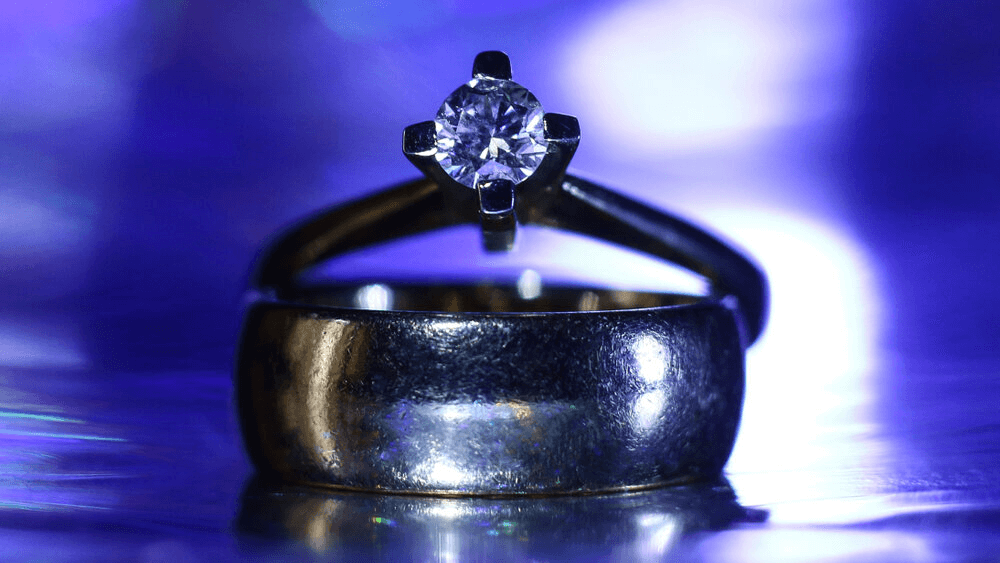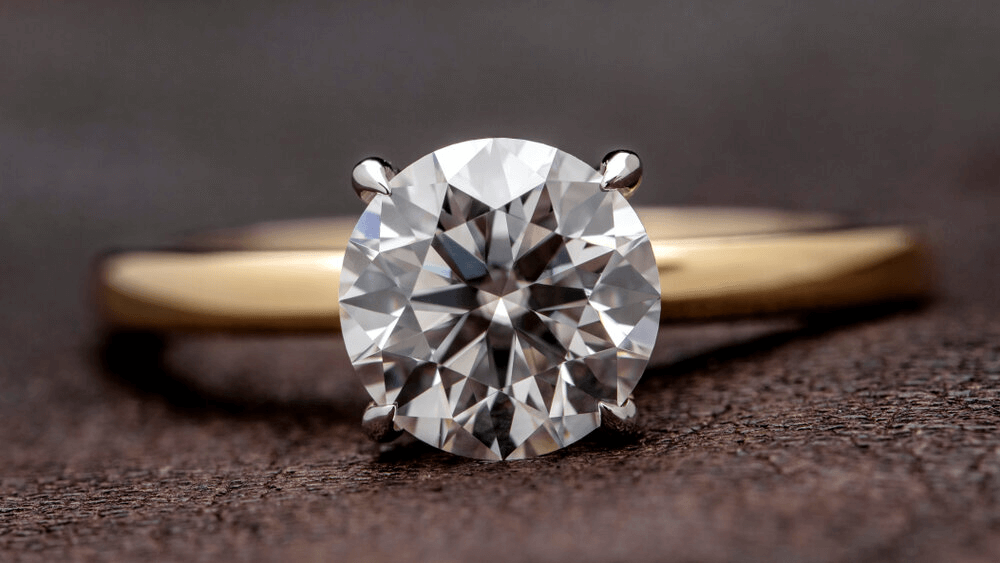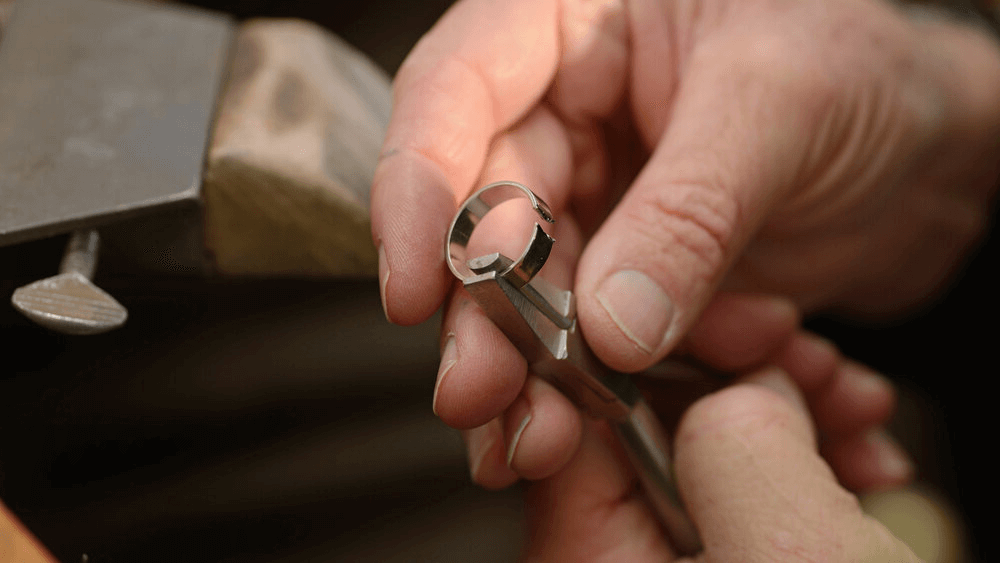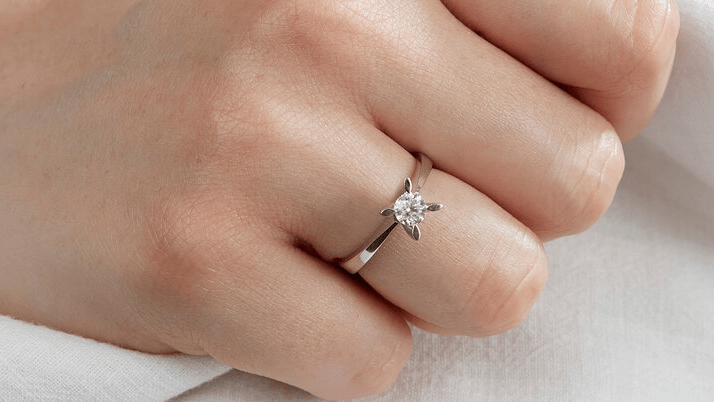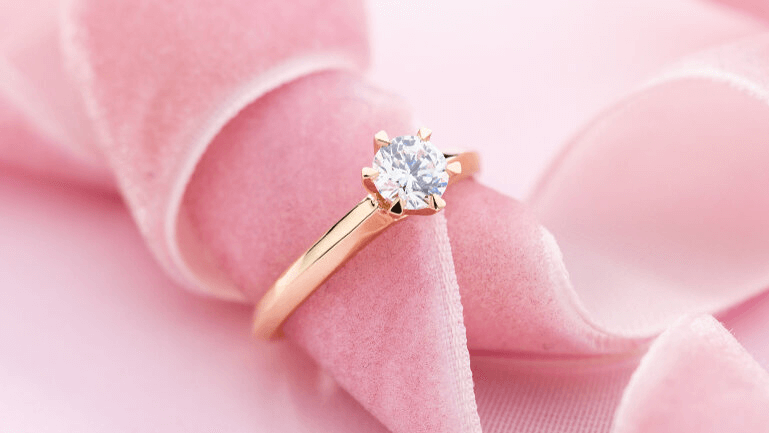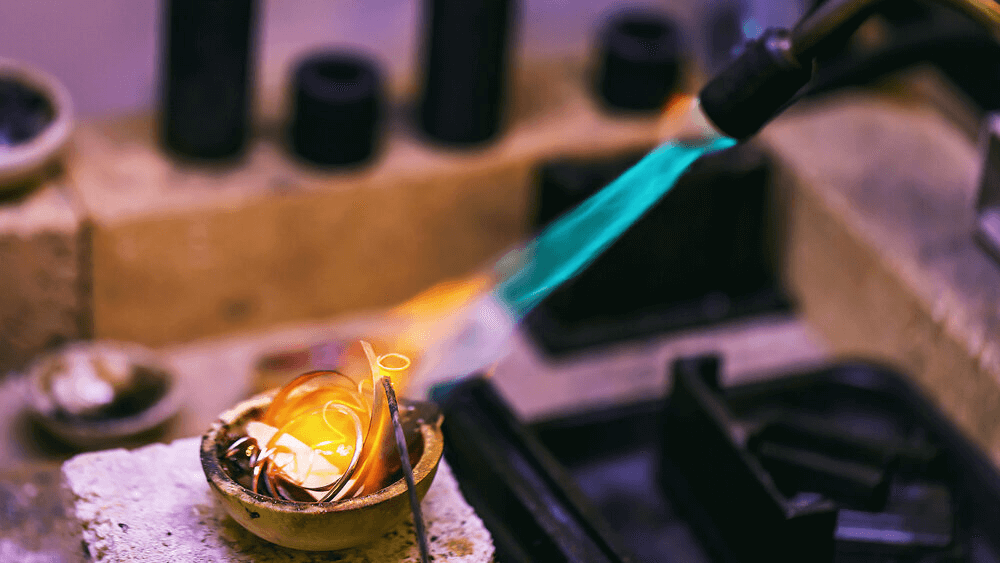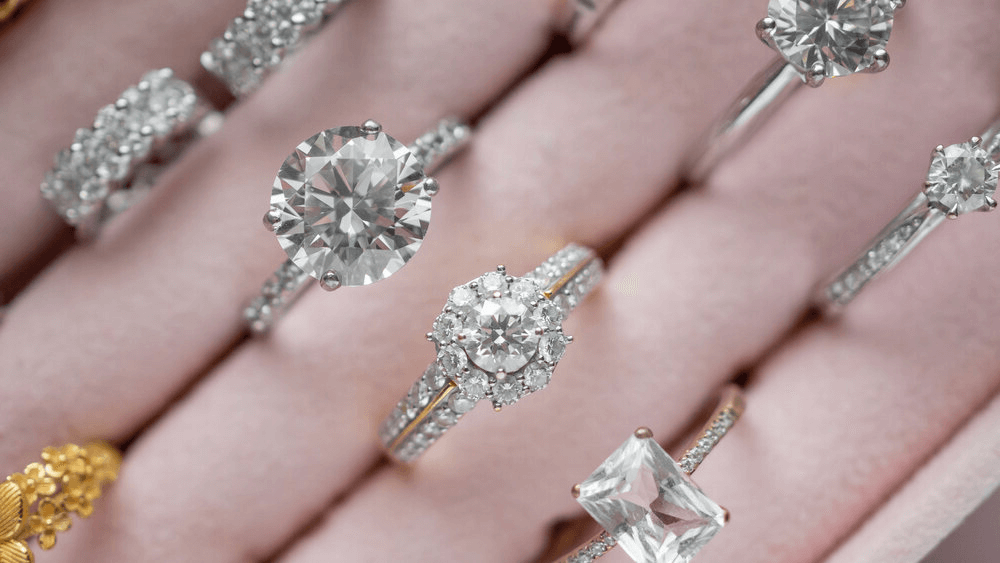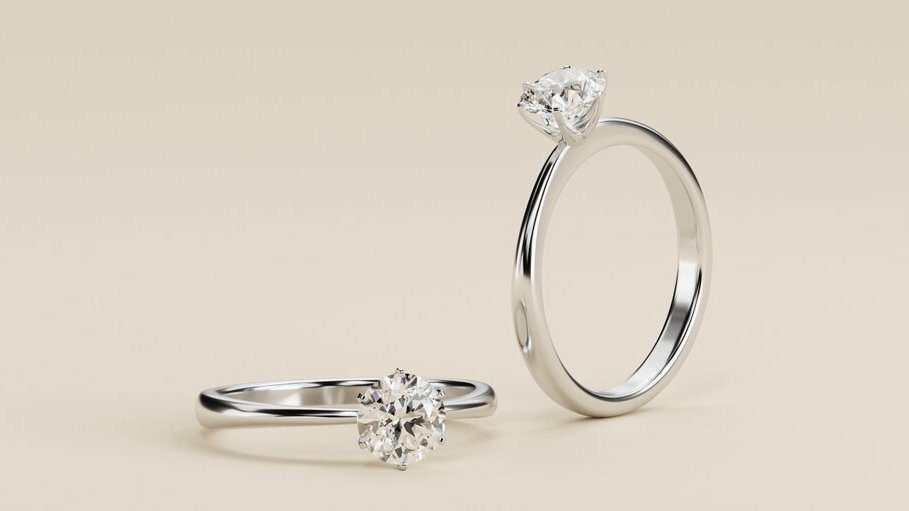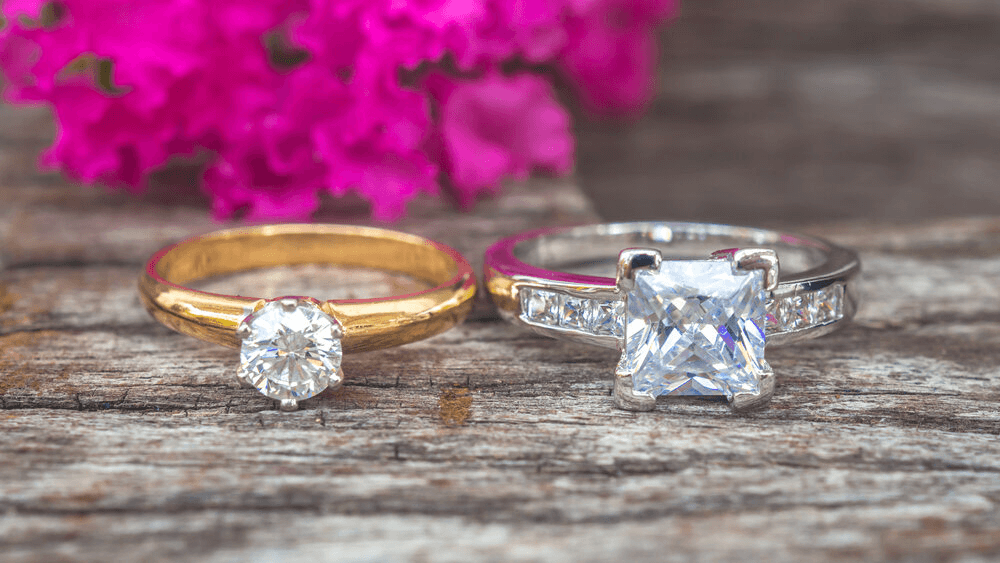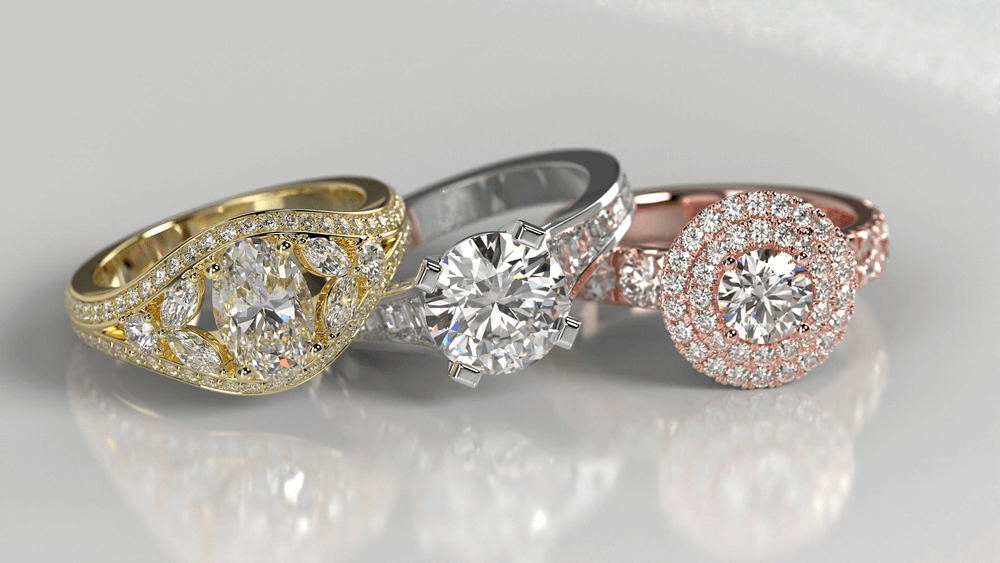18K Gold Engagement Rings: The Insider’s Guide

By Gary A.

Edited by Olivia H.
Published Mar 17, 2022
Edited on Dec 18, 2024
When it comes to balancing luxury and durability, 18K gold engagement rings offer a timeless option that combines rich color with lasting quality, making them a perfect choice for an engagement ring.

- 7 Quick Tips for Buying a Diamond Engagement Ring and Examining 18k Gold
- Introduction to 18k Gold
- The Allure of 18K Gold for Engagement Rings
- Composition and Quality of 18K Gold
- The Aesthetics of 18K Gold
- Practical Considerations
- Real vs Fake: Identifying Authentic 18K Gold
- The Cost of 18K Gold
- Our Expert Take
- 10 FAQs
Before we dive deeper into the specifics, here are some practical tips to help guide your decision-making process:
7 Quick Tips for Buying a Diamond Engagement Ring and Examining 18k Gold
- Tip 1:Check the Hallmark for Gold Purity Hallmark Verification: Always look for the hallmark on the 18k gold band. It should be stamped with “18k,” “750,” or similar marks indicating the gold’s purity. This is a crucial step to ensure you’re getting authentic 18k gold.
- Tip 2:Examine the Gold Color Color Consistency: Observe the color of the gold. 18k gold should have a rich, consistent hue without any discoloration or fading. This is particularly important for yellow and rose gold, which should have a deep, saturated color.
- Tip 3:Test the Metal’s Durability Softness Check: Gently press on the gold to assess its softness. 18k gold is softer than lower karat gold but should still resist easy bending or scratching under light pressure. This test helps you gauge the metal’s quality and durability.
- Tip 4:Inspect the Craftsmanship Quality of Make: Closely examine the craftsmanship of the ring. Look for smooth finishes, even settings, and secure prongs. Flaws in craftsmanship can affect the ring’s durability and the security of the diamond setting.
- Tip 5:Analyze the Diamond’s Setting Setting Security: Ensure that the diamond is securely set in the 18k gold band. There should be no loose parts, and the diamond shouldn’t wobble. A secure setting is vital to prevent the loss of the diamond.
- Tip 6:Study the Diamond Quality Four Cs Assessment: While focusing on the gold, don’t overlook the diamond’s quality. Examine its cut, color, clarity, and carat, as these factors significantly impact the stone’s brilliance and value.
- Tip 7:Verify the Weight Feel Weight Evaluation: Feel the weight of the ring. 18k gold has a significant weight due to its high gold content. A ring that feels too light may indicate lower gold purity or a counterfeit product.
Now that you’ve got these practical tips, use Jeweler AI below to find the perfect engagement ring that suits your style and budget:
Introduction to 18k Gold
For a lot of shoppers looking to invest in fine jewelry, gold is the obvious choice. Its warmth and richness are highly complementary to wearers and to a clear and bright diamond. It’s also got a lot of romantic connotations, and a high status around the world as one of the most precious – if not the most precious – metals there are.
We’ve already written a full guide to gold as a broad subject but, if you’re at the stage of looking, you will be keenly aware of the choice you have to make if you go with gold: what karat type is best for your ring?
One of the most obvious (and most popular) choices is 18 karat gold, but what is it, and why is it a good (or not so good) choice for your ring? Read more below.
The Essence of 18K Gold
Before you jump to settle on the more prestigious 18K gold, get your head around exactly what 18 karats entails for you, as a buyer, and for the ring’s intended wearer – as well as the ring itself.
The Allure of 18K Gold for Engagement Rings
18K is the highest degree of purity that most people will find practical for their jewelry.
As we mentioned earlier, 22K features a much higher degree of purity than 18K gold, but that does not mean it’s ‘better quality’ – merely that buyers investing in a 22K piece will receive more gold total than buyers investing in the same piece at 18K gold. They will, of course, pay a lot more for this, and have to deal with some of the setbacks of wearing and owning gold that is very close to pure.
But it is important to remember that gold is gold and that quality does not waver between karat types like some first-time shoppers think it does.
18K is a good investment, and an 18K gold piece will continue to appear to be ‘good quality’ for many years to come. On the other hand, when worn regularly, a 22K piece of gold jewelry will start to look decidedly lower in quality, since it is likely to become scratched, warped and dented over the months and years.
Composition and Quality of 18K Gold
18K gold features much more gold than alloy – a ratio of 18:6. Although 22K gold does exist, 18K is much more common. For most people, it’s the highest karat type you’d want to pick for an engagement ring.
The Aesthetics of 18K Gold
18K gold is strong enough to be worn regularly, but so are 10K gold and 14K gold, so what’s the key difference between them? Why do some shoppers spend more, just to get 18 karat gold?
Visual Appeal: Color and Shine
18 karat gold is noticeably paler than pure gold, but it is also considerably richer and warmer in color than 14K and 10K gold. It features a strong yellow hue but without the (at times) overpoweringly rich orange of pure gold.
For many people, 18 karat gold is actually more desirable in appearance than pure gold – at least when it comes to jewelry. Its weaker coloration means that it appears more natural on the skin and suits a wider variety of colors.
As we’ve said before, it’s highly unlikely you’ve encountered any 24K gold jewelry – or even 22K gold jewelry – in everyday life, and this is predominantly down to the fact that it’s just too soft and malleable for casual wear. But, even if that were not the case, we imagine 18 karat and 14 karat gold would have still risen in popularity since they offer a more understated (though still highly distinctive and luxurious) alternative to the overpowering color of pure gold.
Practical Considerations
18K gold will not fade or wear away no matter how many years it is worn.
And, while 18K gold is not totally impervious to damage, it’s a lot stronger than 22K or 24K gold. A lot of people still prefer to go for 14K, simply because it can withstand more potential damage, but 18K remains a strong choice (literally).
Durability and Daily Wear
To put it into perspective, it’s worth knowing that it is possible to dent and scratch pure gold with your fingernail, or to bend it with ease. If your band were made from 24K gold, firm pressure could easily bend that perfect circle out of shape and make it unwearable.
18K gold is reinforced by alloying metals, but regular wear will start to leave marks across the surface of the band. Most wearers actually find themselves quite attached to the little scratches that appear on the surface, since they signify the number of years the ring has been worn for.
If you’re not convinced, however, 14K will probably turn out to be the better choice for this reason alone.
18K Gold and Skin Allergies
It’s possible for an 18K gold ring to turn the skin green. Remember, however, that this is not a sign of a fake or poor-quality ring, simply a natural chemical reaction between certain alloying metals like nickel and copper, and oxygen particles in the air.
When the skin turns green under jewelry, this is typically the result of a reaction between certain metals, like copper and nickel, and oxygen particles in the air. The green patina that can occur on these metals is easily transferred (temporarily) onto the skin.
The reaction is often associated with cheap costume jewelry, since these items are rarely made from precious (and non-reactive) metals like platinum and gold with a high karat type, but it’s not true that high quality jewelry can’t have the same effect.
Rose gold, which requires a relatively high volume of copper in order to take on that rosy hue, is a common culprit for turning the skin green for that exact reason – particularly because most rose golds tend to be 14K or 10K, rather than 18K.
18K gold contains a far smaller amount of alloying metal, and reactions are far less likely.
If your partner has allergies or sensitive skin, however, platinum is always the better choice, since it’s almost totally pure when used in jewelry.
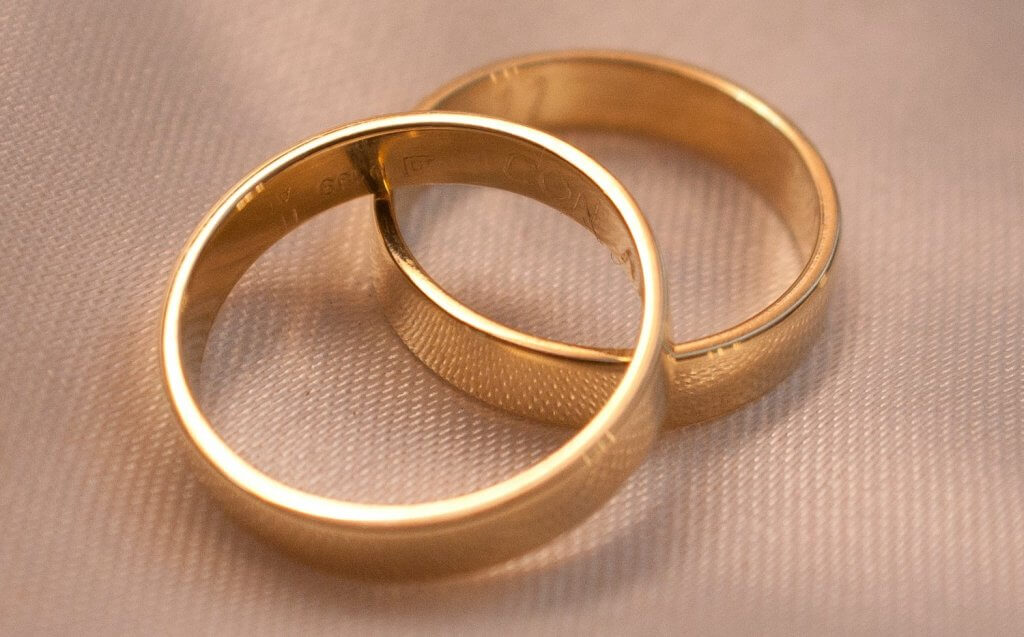
Real vs Fake: Identifying Authentic 18K Gold
Vendors are not allowed to advertise any piece of jewelry as being made from gold – whether 18K or 10K, 14K or 24K – if it is not actually gold.
Of course, as a shopper, you’ll want to look out for the subtle differences between solid gold jewelry, and jewelry that may not contain quite as much gold as you’d think from just looking at it. 18K gold plated or vermeil jewelry, for instance, will contain 18K gold, but only a small amount – just enough to coat the surface of (typically) a sterling silver band with that distinctively warm, vivid shine.
The same goes for gold filled jewelry – the total weight of the item is not indicative of the total weight of gold in the item, whatever karat type is advertised.
In most instances, jewelers are not trying to ‘trick’ you into investing in a product that is not solid gold – these are simply alternative options, often appealing to those in search of cheaper fashion jewelry, rather than fine pieces designed to last a lifetime.
Hallmarks of Genuine 18K Gold
If you’ve got a ring to hand, then study the inside of the band. 18K gold will be stamped as such, or with the number 750.
If it features the numbers 417 or 585, these refer to 10K gold and 14K gold respectively. If, however, it is stamped with 925 (sterling silver), GP (gold plated), or GF (gold filled), then it is not solid 18K gold and is worth significantly less.
It is rare for fake jewelry to be stamped with 750 or 18K, and very, very (very) unlikely if you’re shopping from a reputable jeweler, who will not attempt to pass off an inferior metal as 18K gold (or any other karat type).
The Cost of 18K Gold
At the time of writing, 18K gold is worth a little over $45 per gram.
Remember that gold prices are constantly changing, although this is rarely a drastic change. 18 karat gold will, of course, always cost significantly less than 24 karat gold, but it is the most expensive option for anyone looking to design a piece of jewelry intended for everyday (or even regular) wear.
14 karat gold is the more economical choice if you’re looking to save money, but, as we mentioned above, it can also come down to preference. Sure, there’s a certain amount of prestige attached to 18 karat gold because of its higher value and higher gold content, but that needn’t be a reason to spend more.
It’s worth the cost if you feel drawn to its appearance (and comfortable with its greater vulnerability to wear and tear) – and, most importantly, if you can accommodate it in your budget without making any sacrifices over the quality or beauty of your diamond.
Our Expert Take
We can understand why so many shoppers naturally gravitate towards 18 karat gold at first – but also why, for the most part, 14 karat gold remains the most popular choice. With so much sentimental value attached to gold, it is only natural that many of us want to find the highest gold content possible, without sacrificing the strength and integrity of the ring.
Besides, there’s nothing wrong with settling on 18 karat gold. While we’re eager to warn readers about its relative weakness when compared with lower karat types, it’s not exactly on the verge of warping and denting every minute of the day, and it really is strong enough to withstand years and years of daily wear.
Also, remember that white gold and rose gold are often better at a lower karat type – for the most part, 14K. Since white gold is rhodium plated, and rose gold is supposed to lose that intensely yellow coloration, neither requires a high karat type to look good – and may even look better without that extra gold component.
Ultimately, the choice is down to you, your design, and what you take to be most important in a ring: strength, beauty, or prestige.
10 FAQs
- Q: What Does 18k Gold Mean?
- A: 18k gold means the metal is composed of 75% pure gold and 25% other metals. It’s denoted by the hallmark ’18k’ or ‘750’.
- Q: Does 18k Gold Scratch Easily?
- A: 18k gold is softer than lower karat gold, making it more prone to scratches. However, it is still durable enough for daily wear with proper care.
- Q: Can You Wear 18k Gold Every Day?
- A: Yes, you can wear 18k gold every day. However, it requires careful handling to maintain its appearance due to its softness.
- Q: Is 18k Gold Real?
- A: Yes, 18k gold is real gold with a high purity level, containing 75% gold.
- Q: Does 18k Gold Turn Your Skin Green?
- A: Generally, 18k gold does not turn your skin green as it has a high gold content and minimal base metals.
- Q: What Does 18k Gold Look Like?
- A: 18k gold has a rich and deep color. Its hue varies slightly depending on the type of metal alloyed with the gold.
- Q:. How Much is 18k Gold Ring Worth Per Gram?
- A: The value per gram for an 18k gold ring depends on current gold market prices. It’s typically higher than lower karat gold due to its purity.
- Q: Is 18k Gold Good for Everyday Wear?
- A: Yes, 18k gold is suitable for everyday wear, but it requires more care than lower karat gold to maintain its appearance.
- Q: What Is the Best Way to Clean an 18k Gold Ring?
- A: Clean it with a mild soap solution and a soft brush. Avoid harsh chemicals and abrasive materials.
- Q: How Do You Tell if 18k Gold Is Real?
- A: Check for hallmarks like ’18k’ or ‘750’, and consider having it tested by a professional if unsure.
Unlock the elegance of 18k gold with Jeweler AI – Your gateway to the perfect engagement ring.
FOLLOW-UP GUIDE SERIES

